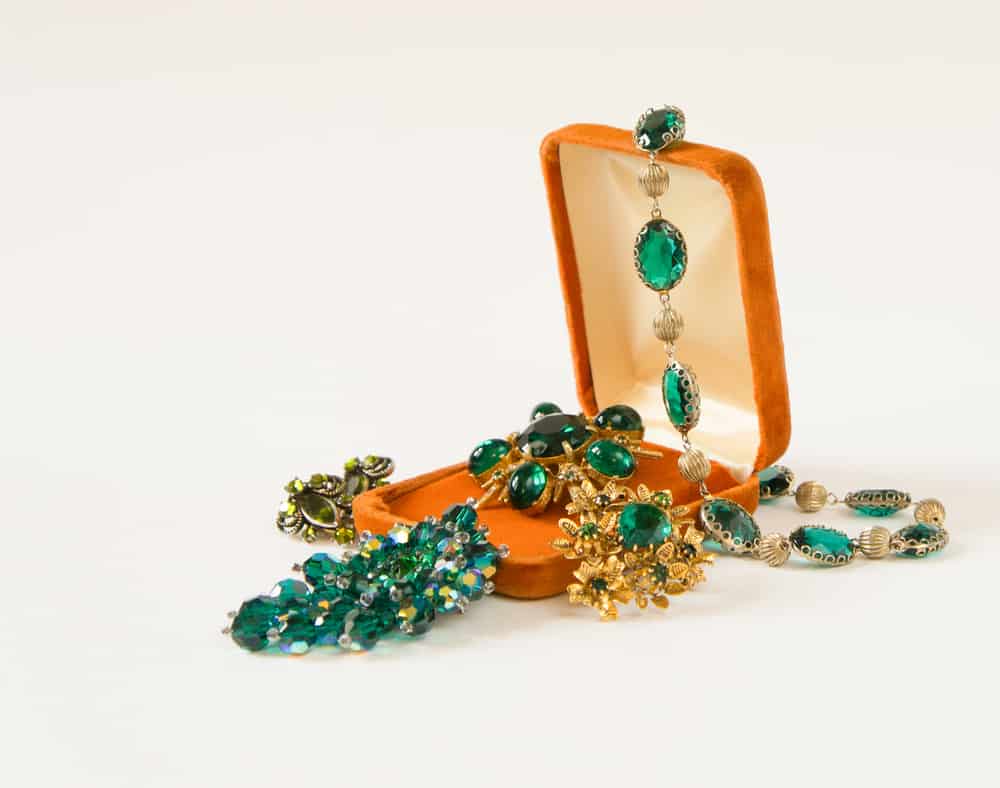Diamonds have traditionally been considered a luxury item that only the wealthy could buy. The rhinestone, however, became quite fashionable in the late 19th and early 20th centuries.
At the beginning of the last century, technology had progressed far enough to be able to mimic several precious stones, including diamonds, once reserved for royalty and the wealthy.
However, the twentieth century brought hegemony in this regard, making this precious stone a feasible fantasy for the increasing middle class, who has been the target audience of most large-scale businesses.
In this guide, we want to teach you everything you need to know about vintage rhinestone jewelry value. Grandma’s jewelry that you inherited and is sitting at the bottom of your drawers may be worth a good amount of money, even if it’s not the material that it purports to be.
There are many collectors interested in this “fake” jewelry, so do not rule anything out before making sure, you may have a hidden treasure at the bottom of your nightstand.
Table of Contents
Vintage Rhinestone Jewelry Types
During the twentieth century, rhinestones were extremely popular. They had been around since the end of the nineteenth century, but it wasn’t until 1920 that middle-class ladies began to buy them regularly.
And because of its enduring popularity, we can get this sort of jewelry in a limitless variety of designs and hues depending on the time period. To satisfy the fantasies of commoners to become or feel part of royalty for a day, jewelers began to employ it as a brooch with pins to hang on the lapel of the jacket, in rings, lavish necklaces, earrings, clasps, bracelets, and even tiaras.
Thanks to the fact that they were around for many years, we can now appreciate the influence of various vintage brands. This data will also be useful when we have to determine their value and to which year they belonged, but we will see that in greater depth later.
Art Nouveau
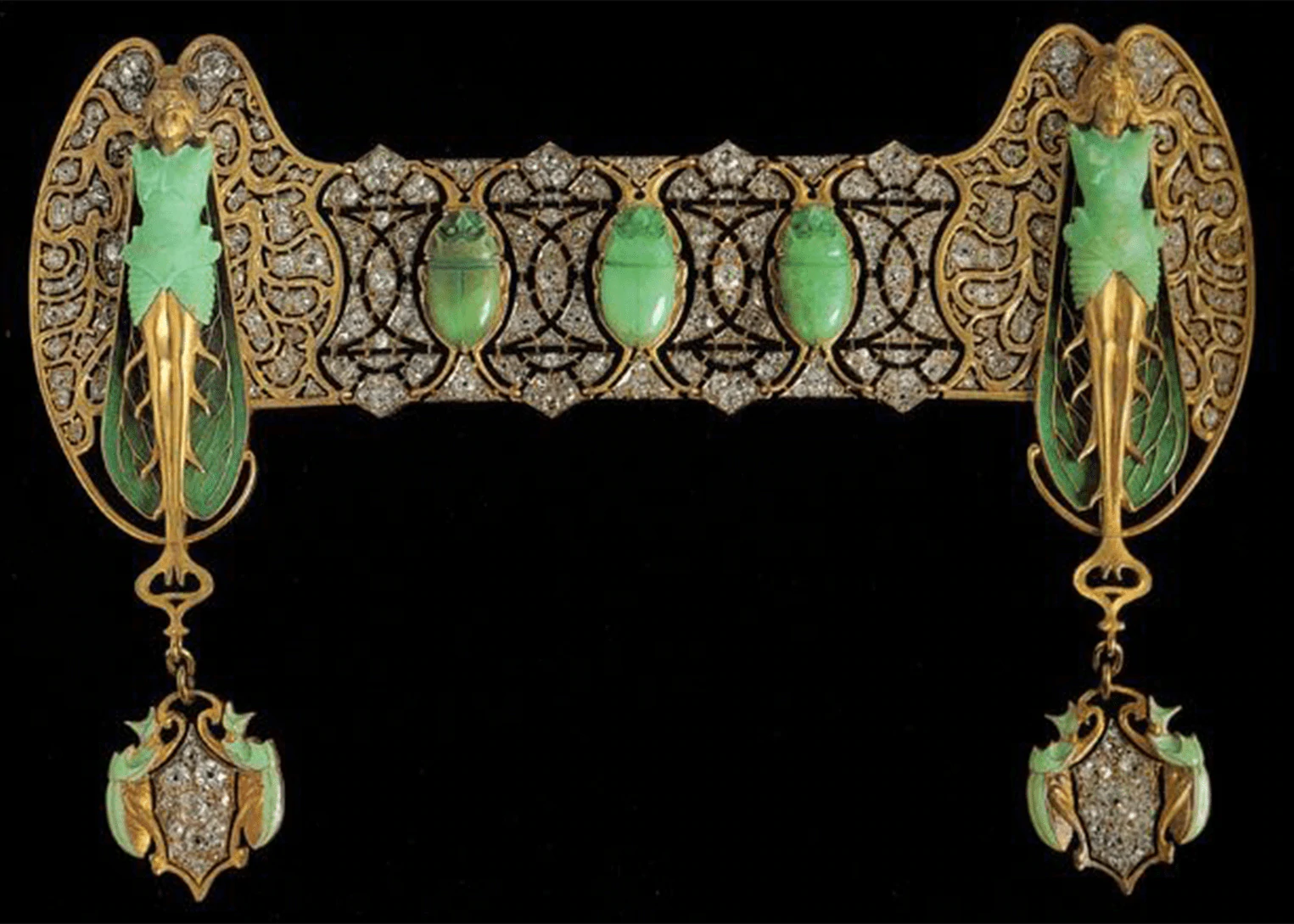
Art Nouveau emerged towards the end of the nineteenth century and persisted until World War I. The idea for this style comes from natural aspects such as flora and animals. The lines and strokes are always broad and fluid. Many brooches depicting women, animals, or flowers were manufactured at this time. Most of them are delicately ornamented.
It should be emphasized that, while being counterfeit jewels, they are not cheaply produced; on the contrary, they have gone to great lengths to make them perfect to closely resemble real diamond jewels.
Art Deco
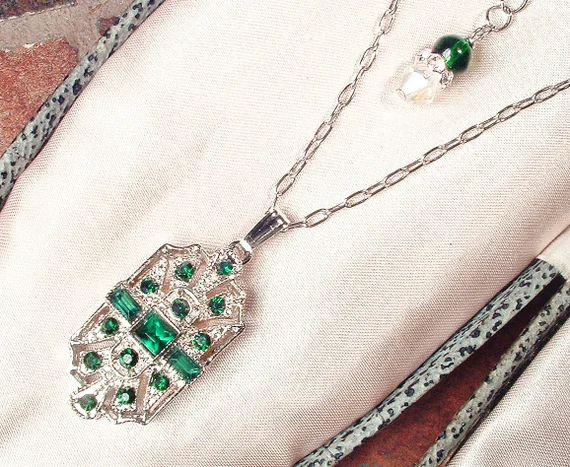
Art Deco was popular for ten years, from the 1920s to the 1930s. Geometric forms were popular throughout this time, and patterns were common. Filigree is highly popular in this style, and most of the items are very shiny and eye-catching.
Post War
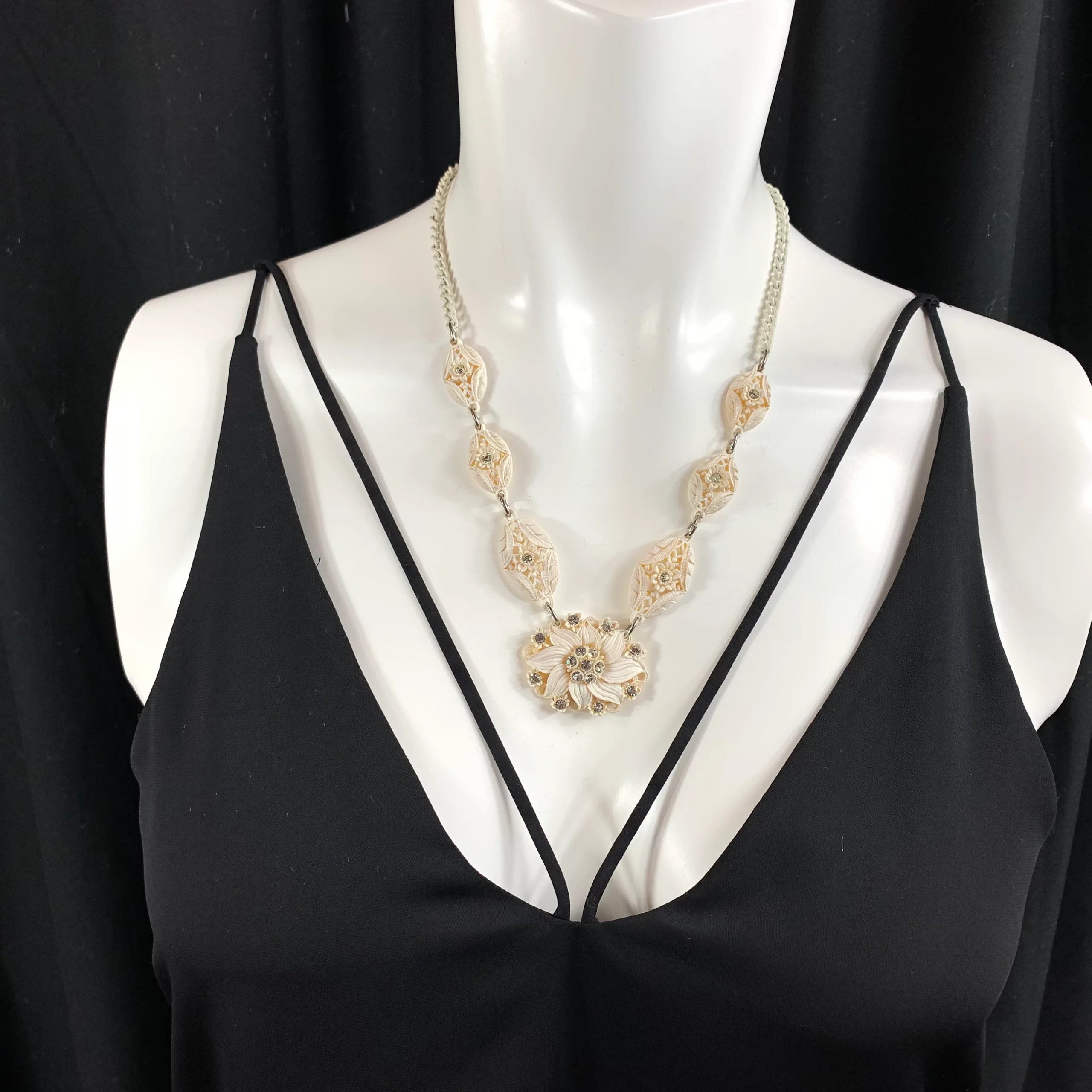
The conclusion of WWII had an impact on the variety of products available for purchase around the world. Jewelry was no different. The style of the time was distinguished by its enthusiasm and brilliant colors. The designs are lighthearted and informal.
Enameling in rhinestones has been quite popular in recent years, as have figures inspired by natural patterns such as stars or snowflakes. It combines the earlier Art Deco style with Art Nouveau brushstrokes in some way.
Rhinestone Jewelry Designers You Should Know
The twentieth century was rich in trends as well as designers. It’s worth remembering that when the middle class grew in purchasing power, many of these businesses found it profitable not only to devote themselves to traditional jewelry but also to venture into the imitation jewelry sector.
The following are the most well-known designers and those that produced a huge number of gems in the last century keep in mind that not only are these designers collectible but there are many jewels with limitless particularities that can make the antique jewel you own extremely expensive.
Carnegie
In 1918, Hattie Carnegie launched her clothes brand, and 20 years later, she launched a costume jewelry line. This New York entrepreneur became well-known among movie stars and high society figures, but she gradually moved into the American middle class.
Her jewelry was in stark contrast to her clothing line, as the former was bold and daring while hers were more conservative. Her jewelry is characterized by being finely carved by master craftsmen.
Butler & Wilson
Although brooches were very popular throughout the era of imitation jewelry, this company stands out for its incredible figures with shapes of animals or period objects and nice imitations of real gemstones. The finish is impressive and highly detailed.
Trifari
Gustavo Trifari was an Italian immigrant who established his jewelry business in the early twentieth century. In the 1930s and 1940s, however, Trifari jewelry came into popularity. His fake diamonds were the most expensive, and they were frequently set in gold, silver, or platinum. His style evolved in response to the creative trends of the day. His early works feature geometric forms, however, his later works are more detailed and feature bright and eye-catching floral arrangements.
Eisenberg
Jonas Eisenberg used a unique marketing method to promote his clothing line. He chose to include a rhinestone in each piece of clothing. Finally, people bought clothes for the jewel rather than the garments themselves. As a result, the apparel line faded away, leaving only the jewelry. His copies of 18th-century jewels were in high demand.
Swarovski
Swarovski pioneered imitation jewelry and was a constant source of inspiration for all manufacturers; several firms, such as Eisenberg, used their imitation diamonds in their designs.
The Best Way to Determine the Worth of Vintage Jewelry
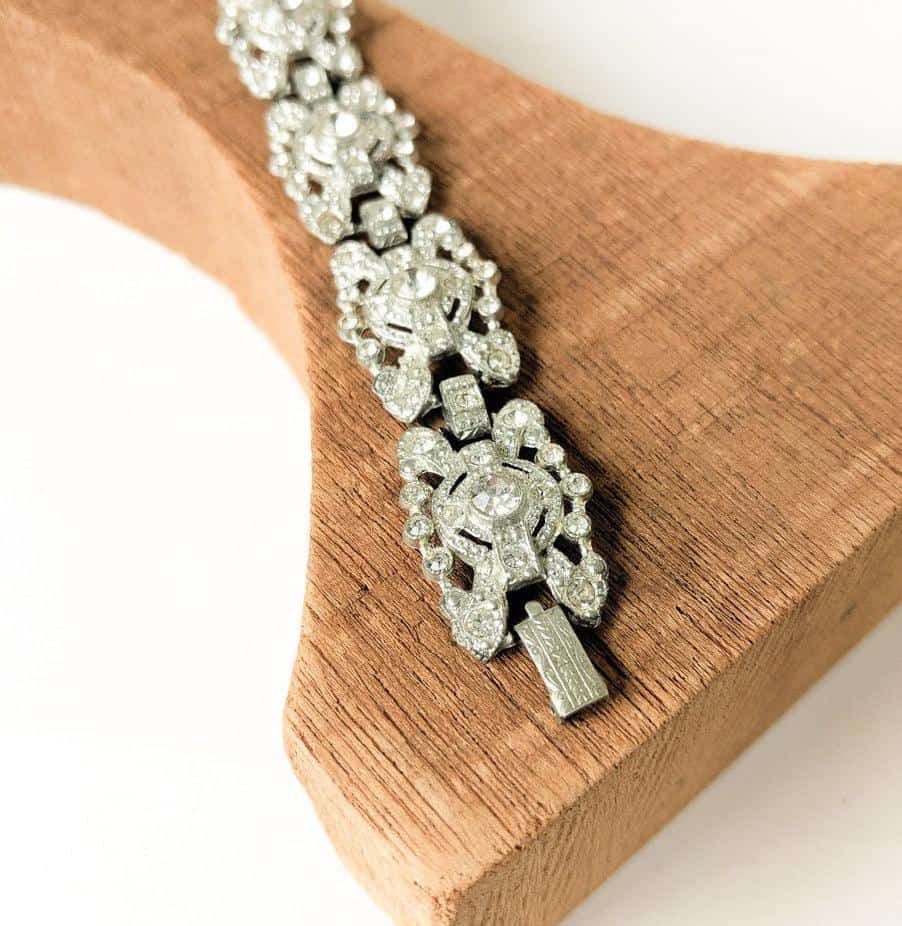
The gem you’ve salvaged could be worth a very little sum of thousands of dollars. If you want to sell Grandma’s jewelry and make some money, follow these guidelines to determine the best value for your Vintage Jewelry.
The key to branding and design
Keep in mind that there are reputable and high-quality brands that will instantly boost the worth of your jewel if it belongs to one of them. So, on your jewelry, look for the brand name or emblem. Remember that all products used to be signed, either by the firm that made them or by a specific design created by their artistic makers.
We mentioned a few well-known firms that were influential for their style and quality in the previous part, but here’s an even longer list of names that will instantly add value to your jewelry if it belongs to one of them. Cartier, Tiffany, Carnegie, Bulgari, Christian Dior, Coco Chanel, Eisenberg, Schiaparelli, Butler, Hobe Cartier, Tiffany, Carnegie, Bulgari, Christian Dior, Coco Chanel, Eisenberg, Schiaparelli, Butler & Wilson, and Swarovski.
You should also keep in mind that it’s not just the markings that attract collectors’ attention, but also the unique cuts and any unusual details on the piece.
Check if it is in Good Condition
It is critical to inspect each piece for good condition, as this can diminish the object’s value. The explanation for this is simple: some pieces are just impossible to duplicate, and so cannot be replaced.
Examine the stones for chips and the quality of the silverbacks. The base on which the jewelry is mounted is also crucial. The tiniest detail matters here.
The Jewel’s Age
Because a vast number of imitation diamonds were produced in the previous century, the age of manufacture plays a significant influence in determining its worth.
If you have jewelry from before the 1950s, you are in luck, and you may have a hidden gem on your hands. However, it must date from the 1980s to be labeled antique jewelry. You must be cautious with the most recent pieces since technology has improved significantly and while they may appear to be well-made, you are ultimately holding plastic.
Everything revolves around quality
Another deciding aspect is quality. Because some pieces were not created with the intention of lasting a long time. As a result, the ways in which diamonds withstand the passage of time vary greatly. However, if you have a product from a recognized manufacturer, chances are it was created with high-quality materials that will last.
Jewelry with excellent craftsmanship has more value
Although we’ve talked a lot about jewelry made in mass production and well-known factories, artisan-crafted jewelry might be much more precious. Handmade jewelry is valuable because it is made with great care and attention to detail, giving it intrinsic worth.
Specific characteristics
The more distinctive the rhinestone fine jewelry is, the more likely it is to fetch a good price.
The design could be extremely unique, or it could be a popular figure among collectors. It could possibly contain a unique inscription or one that was only made for a limited time. Remember that even if it’s a minor element, if it’s unique, it has the potential to sell.
Use a Magnet
Place a magnet near your jewelry and check if it adheres to it. This is to see if the gold-colored support is actually gold. It will not stick to the magnet if it is genuine gold.
Compare parts that have recently been sold
The best way to appraise a piece of jewelry is to take it to a specialist; however, not all pieces are worth that much, so we recommend searching for recent rhinestone auctions online.
Remember to look at jewelry that has recently been sold rather than jewelry that is for sale, because sellers can set any price for their jewelry, but only those who have been successful in selling it are a better reference to how much you can ask for it.
What are the Signs that Rhinestones are Vintage?
Rhinestone jewelry has been popular for so long, and so many different kinds have been created, that determining whether or not a piece is actually vintage can be difficult. However, in order to be considered vintage, a jewel must be at least 20 years old. In this category, jewelry made before the 1980s is considered vintage.
Also, ensure certain they are not composed of plastic. Rhinestones of the greatest quality are usually composed of glass or crystal.
Another way to verify that they are real is to give them a little hit. If it jingles, it’s real. It also helps to check that the piece belongs to a specific style, such as the Art-Deco or Retro period.
The Rarest and Valuable Vintage Costume Jewelry Today
- Ming Black Dragon Pearl Belly Brooch Pin – Trifari 1942 — $6,900
- Tree Clip Pin Brooch – Trifari 1941 — $4,250
- Large Rubi Red Trifari Waffle Glass Flower – by Alfred Phillipe — $2,938
- Tree Frog Figural Topaz Belly Enamel Pin Fur Clip – Trifari 1941 — $2,696
- Lunch at the Ritz African Safari Jungle Belt — $1,979
- Jewels of India Triple Drop Brooch – Vintage Trifari — $1,236
Is it Possible that Rhinestones are Fake Diamonds?
Rhinestones are not genuine diamonds in the strictest sense. Within the category of rhinestones, however, those made of crystal or glass are deemed genuine and have higher quality than those made of plastic, which is considered fake. Despite the fact that they are not real diamonds, they are nonetheless precious and many collectors are willing to pay hundreds of dollars for them.
What is the Best Way to Clean Vintage Rhinestone Jewelry?
Cleaning Material
The most important rule for cleaning rhinestones is to never soak them in water or cleaning solution.
The most advisable thing is to use a soft cloth and spread a little ammonia-based cleaning product.
Cleaning Method
You must gently clean the surface of the stones without touching the tips. This is because rhinestones have a foil on the back that can be ruined by moisture.
Open rhinestones that do not contain glass foil can be easily cleaned from all sides.
If you are using an ammonia product you must be careful when cleaning, as ammonia lightens the metal so that it regains its shine, but it can also cause you to lose the metal’s patina.
Rhinestones are often set in a structure that is difficult to clean, so we advise you to use a brush and clean carefully. After removing all the dirt, pass a damp cloth with water and dry immediately.
Other tips that you should know
Another very valuable tip is to always clean with a dark cloth because if by chance a diamond comes off it will be easier to locate it to put it back on.
If the metal part of your jewel has a corrosive green layer, it is a sign that the piece is completely damaged. It is important to move that piece away from the others as it can spread to healthy pieces.
It is not recommended that you store the jewelry together with other jewelry. It’s best to store them separately and give each one its own space. It is suggested that they be wrapped in a little cotton or if you have an organza bag, much better.
Conclusion
We hope that this tutorial has helped you learn more about the intriguing and extensive world of rhinestones. Remember that if you have any vintage jewelry and want to sell it, you should first research the market, and determine the year it was made, as well as the style and designer.
Take good care of it and keep in mind that even minor damage can devalue it or raise its worth due to a unique feature of the diamond. Collectors may be more interested in uncommon vintage pieces.
